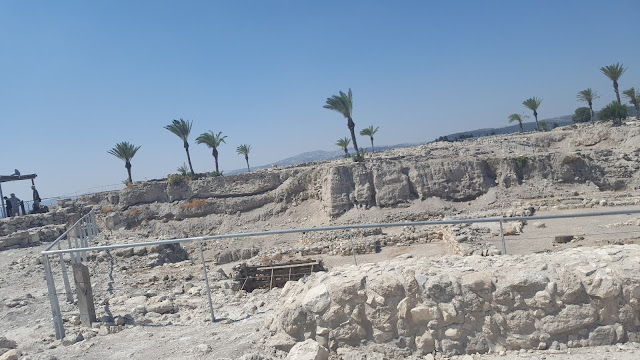Confronting Identity in Israel
Confronting
Identities
As I pondered over the idea of what my blog would be about I
considered many different things. So far, this trip has been amazing and every
day I have learned something new about Israel and its history. However, there
has been one reoccurring theme that has continued to plague my mind throughout
our many visits: identity. This is a fascinating concept that continues to transform
as more people gain the right to define their identity without government
intervention. In Jerusalem, identity has appeared in various forms. As far as
on a religious level, we have explored several different churches and spaces
that host a range of beliefs including Judaism and Christianity.
Noting the differences in architecture, eating practices,
and even sales techniques here leave a notable impression on the way religion
shapes people’s daily lives. Furthermore, museums have played an interesting
part in maintaining national identities. For instance, our visits to the
Israeli and Holocaust museums have produced fruitful conversations about how
displays may evoke emotions that range from awe of the beautiful artwork to
sorrow as a result of the touching survival stories of Jews. These depictions
and our reactions, whether we know it or not, are ultimately shaping the way we
view Israel as a whole.
Nevertheless, I think it’s important that we recognize two
very important things. First, there are two sides to every story and somewhere
in the middle there is the truth. Second, telling both sides of the story encourages
a healthy relationship in which both participants are able to express and shape
their own identity. Our fantastic tour guide, George, on June 15th started
his lecture with “we have so many different identities.” He then goes on to
explain that it was rough for him, and many other people in this area, to
choose a particular identity according to their location. On one side, it is
clear from the 50th Anniversary of Jerusalem’s Annexation
celebration we attended in the Old City that Zionist movement in Israel has
been a blessing to many Jews celebrating that night. However, Palestinian
resistance provides a nuance to this story. In different locations around the
state we’ve spotted signs of Palestinian resistance to Israeli occupation such
as red or green fists, posters noting prisoner hunger strikes, and even signs
demanding peace amidst the violence. On further investigation, I discovered
that the movement is currently fractured because many people have utilized
different methods to reach the ultimate end goal of Palestinian Liberation.
Some tactics are religious while others are political, but it has been recently
difficult to recruit supporters’ due to the growing strength of the Israeli
government and the lack of cohesiveness within the movement.
As a result, I think we should consider that although Zionism
has provided a safe haven for many displaced Jews in their biblical homeland;
it has also marginalized groups such as the Palestinian Arabs in a land that
they had occupied historically for centuries. So when we eventually go home to
our cozy houses, in our familiar neighborhoods, with our celebrated local
culture and churches, consider how close your own local space shapes your
personal identity. And then consider what type of everyday resistance you would
invent if that comfort was ever taken from YOU.

Comments
Post a Comment